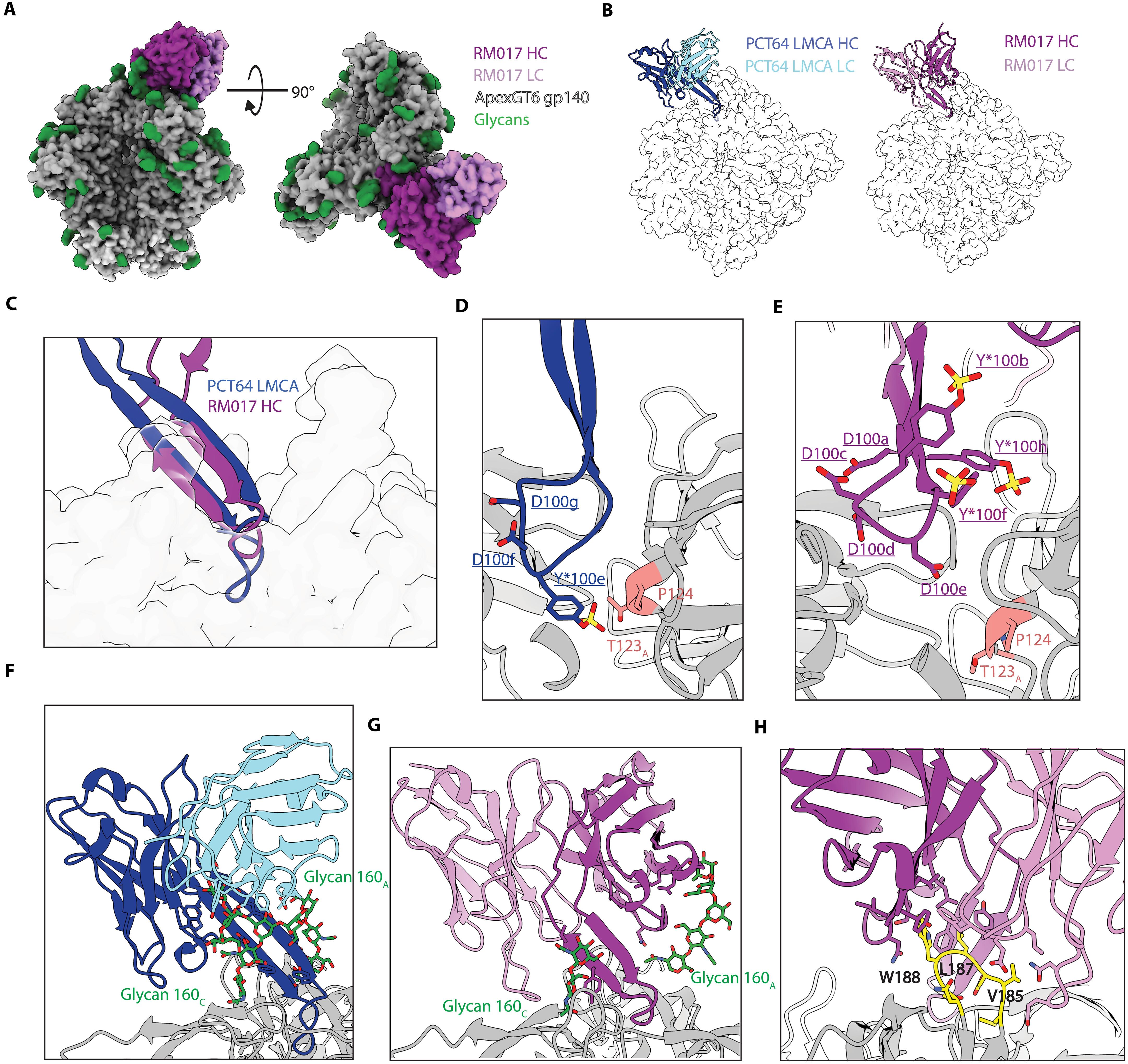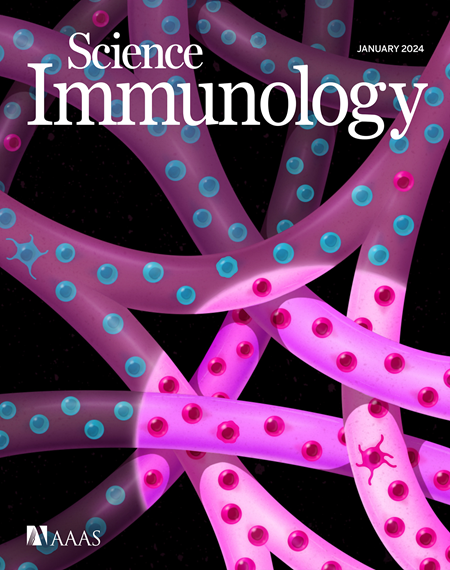在非人灵长类动物中诱导的HIV广泛中和顶点表位的抗体前体
IF 16.3
1区 医学
Q1 IMMUNOLOGY
引用次数: 0
摘要
一种有效的预防性HIV疫苗可能需要诱导广泛中和抗体(bnAbs)。HIV包膜糖蛋白(Env)顶点区域的bnAbs与其他bnAbs相比,体细胞超突变相对较低,因此有望成为疫苗接种的靶点。大多数Apex bnAb通过含有特定结合基序的超长重链互补决定区3 (HCDR3)与Env结合,这降低了bnAb前体的频率,并使罕见的bnAb前体的引物可能成为Apex bnAb诱导途径中的限制步骤。我们发现,用ApexGT6(一种Env三聚体,用于结合Apex bnAb前体)佐剂蛋白或mRNA脂质纳米颗粒(LNP)免疫恒河猴,可以持续诱导带有bnAb样序列基序的长HCDR3s的Apex bnAb相关前体。低温电镜显示,诱导的Apex bnab相关HCDR3s具有结合几种Apex bnab原型元素的结构。这些结果在近亲繁殖的灵长类动物中实现了HIV疫苗开发的一个重要里程碑。本文章由计算机程序翻译,如有差异,请以英文原文为准。

HIV broadly neutralizing antibody precursors to the Apex epitope induced in nonhuman primates
An effective prophylactic HIV vaccine will likely need to induce broadly neutralizing antibodies (bnAbs). bnAbs to the Apex region of the HIV envelope glycoprotein (Env) are promising targets for vaccination because of their relatively low somatic hypermutation compared with other bnAbs. Most Apex bnAbs engage Env using an exceptionally long heavy-chain complementarity-determining region 3 (HCDR3) containing specific binding motifs, which reduces bnAb precursor frequency and makes priming of rare bnAb precursors a likely limiting step in the path to Apex bnAb induction. We found that adjuvanted protein or mRNA lipid nanoparticle (LNP) immunization of rhesus macaques with ApexGT6, an Env trimer engineered to bind Apex bnAb precursors, consistently induced Apex bnAb–related precursors with long HCDR3s bearing bnAb-like sequence motifs. Cryo–electron microscopy revealed that elicited Apex bnAb–related HCDR3s had structures combining elements of several prototype Apex bnAbs. These results achieve a critical HIV vaccine development milestone in outbred primates.
求助全文
通过发布文献求助,成功后即可免费获取论文全文。
去求助
来源期刊

Science Immunology
Immunology and Microbiology-Immunology
CiteScore
32.90
自引率
2.00%
发文量
183
期刊介绍:
Science Immunology is a peer-reviewed journal that publishes original research articles in the field of immunology. The journal encourages the submission of research findings from all areas of immunology, including studies on innate and adaptive immunity, immune cell development and differentiation, immunogenomics, systems immunology, structural immunology, antigen presentation, immunometabolism, and mucosal immunology. Additionally, the journal covers research on immune contributions to health and disease, such as host defense, inflammation, cancer immunology, autoimmunity, allergy, transplantation, and immunodeficiency. Science Immunology maintains the same high-quality standard as other journals in the Science family and aims to facilitate understanding of the immune system by showcasing innovative advances in immunology research from all organisms and model systems, including humans.
 求助内容:
求助内容: 应助结果提醒方式:
应助结果提醒方式:


